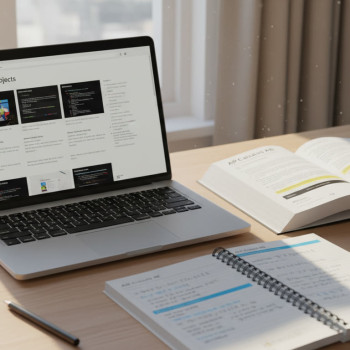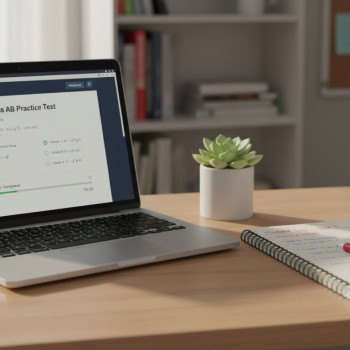Introduction — Why This Mapping Matters
Switching from IB Language courses (Spanish or French) to an AP Language course can feel like stepping onto a new stage mid-performance. The skills you’ve built in IB—analytical reading, contextualized writing, cultural awareness—are powerful foundations. But the AP Language Free Response Questions (FRQs) come with their own expectations, formats, and scoring nuances.
This blog is written for students and parents who want a clear, practical bridge between IB Spanish/French and AP Language FRQs. We’ll map task equivalents, walk through strategies, show sample prompts, and give you a study plan you can adapt. Along the way, you’ll see how targeted 1-on-1 guidance—like Sparkl’s personalized tutoring with tailored study plans and AI-driven insights—can accelerate progress without overwhelming students or parents.
Quick Overview: IB vs AP Language — What’s Similar, What’s Different
At a glance, both IB language courses and AP Language emphasize reading comprehension, cultural context, and strong writing. But the AP Language exam (particularly the FRQs) has a concentrated focus on rhetorical analysis, argumentation, and synthesis of sources, often in English. Understanding those emphasis shifts is the first step in translating your IB skills into higher AP performance.
Core similarities
- Close reading of texts and awareness of tone, audience, and purpose.
- Emphasis on clear, organized written expression and evidence-based support.
- Practice with language and style appropriate to prompts (formal registers, persuasive techniques).
Key differences
- AP Language FRQs typically occur under strict time constraints (about 120 minutes for three FRQs) and demand rapid synthesis and writing in English.
- AP focuses heavily on rhetorical devices, argument construction, and synthesis of multiple sources; IB tasks sometimes emphasize cultural context and oral proficiency more strongly.
- Scoring rubrics differ—AP graders look for clarity of thesis, evidence, reasoning, sophistication of thought, and rhetorical awareness in specific ways.

Mapping IB Tasks to AP Language FRQs: A Practical Guide
Below is a direct mapping of common IB task types to AP Language FRQ equivalents. Use this as a checklist when designing practice sessions.
| IB Task Type | AP Language FRQ Equivalent | What to Practice |
|---|---|---|
| Textual commentary (literary or non-literary) | Rhetorical Analysis FRQ | Identifying rhetorical devices, explaining effect, structuring paragraph-by-paragraph analysis. |
| Essay on cultural context or comparative analysis | Synthesis / Argument FRQ (use context as evidence) | Integrating contextual knowledge as supporting evidence; linking cultural perspective to claims. |
| Persuasive essay in target language | Argument FRQ | Developing a clear thesis, supporting with evidence, anticipating counterarguments (in English for AP). |
| Oral presentation or stimulus-based task | Synthesis FRQ (multiple sources) | Synthesizing spoken and written sources; rapid note-taking and combining to support a claim. |
Deep Dive: The Three AP Language FRQs and How IB Experience Helps
The AP Language section with FRQs usually contains three tasks: a rhetorical analysis, an argument essay, and a synthesis essay. Let’s break them down and show exact ways IB Spanish/French skills transfer.
1. Rhetorical Analysis FRQ
What it asks: Analyze how an author builds an argument or achieves a purpose using rhetoric and craft.
How IB prepares you:
- IB textual commentary trains you to annotate tightly for diction, tone, and structure—exactly what the AP rhetorical analysis demands.
- IB’s emphasis on comparative stylistics helps you recognize recurring rhetorical strategies and their effects.
Actionable practice:
- Choose short speeches or essays (200–700 words). Annotate for rhetorical devices—ethos, pathos, logos; imagery; sentence variation; syntax; and diction.
- Write timed 30–40 minute analyses focusing on one or two central devices, explaining their effect on the audience.
2. Argument FRQ
What it asks: Take a clear position on a prompt and support it with reasoning and evidence.
How IB prepares you:
- IB persuasive writing in another language builds persuasive structure, but AP requires you to do this quickly in English and often with fewer explicit scaffolds.
- IB’s emphasis on balanced argument and cultural nuance helps when AP asks you to acknowledge counterarguments.
Actionable practice:
- Practice concise thesis statements and topic sentences. Aim for a thesis that takes a clear, defensible stance in one sentence.
- Work on quick evidence retrieval—use practice sets where you must pick the two best pieces of evidence and explain them in two or three sentences each.
3. Synthesis FRQ
What it asks: Use multiple provided sources to create an argument or analysis; integrate and attribute sources accurately while advancing a coherent claim.
How IB prepares you:
- IB oral and written synthesis tasks hone the skill of drawing from varied prompts and media—useful for AP’s source-based demands.
- IB experience in weaving cultural context into writing helps you add depth to synthesis arguments.
Actionable practice:
- Practice summarizing each source in one sentence, noting the author’s main claim and rhetorical stance.
- Create a synthesis matrix: claim, source 1 evidence, source 2 evidence, explanation. Use this as an outline before writing.

Sample Practice Routine: A 6-Week Ramp-Up
This routine takes you from consolidation to timed mastery. If your schedule is tight, prioritize weeks 4–6 (timed practice and feedback).
- Weeks 1–2: Foundation and Mapping
- Collect 6 short texts (2 rhetorical pieces, 2 argumentative essays, 2 multimodal pieces).
- Daily 20–30 minute annotation sessions. Translate key phrases from Spanish/French into English to note rhetorical equivalence.
- Weeks 3–4: Practice and Skill Transfer
- Alternate between writing a rhetorical analysis and an argument every other day. Use 45–60 minute sessions to start, then shorten to 40.
- Begin source synthesis practice with two-source exercises; build to three-source mixes.
- Weeks 5–6: Timed Exams and Targeted Feedback
- Simulate full AP Language FRQ section once per week under timed conditions.
- Get detailed feedback—focus on thesis clarity, paragraph coherence, and strength of evidence. Sparkl’s personalized tutoring can provide targeted 1-on-1 feedback here to quickly fix recurring patterns.
Rubric Awareness: What AP Readers Really Look For
Understanding the scoring rubrics is the most efficient way to raise AP FRQ scores. For each FRQ type, focus on what’s explicitly rewarded:
- Rhetorical Analysis: Clear thesis about author’s purpose; accurate identification of strategies; explanation of effect; organized development.
- Argument: Assertive thesis; logically developed reasons; relevant evidence; acknowledgement of counterargument when appropriate.
- Synthesis: Accurate incorporation of sources; clear attribution; cohesive argument that ties sources together rather than summarizing them separately.
Practical tip: List the rubric expectations on flashcards. Before you start every timed practice, read the rubric aloud for 30 seconds—this primes your writing to meet the graders’ checklist.
Common Pitfalls and How to Avoid Them
Students transitioning from IB often face a small set of recurring issues. Here are the most common and how to fix them quickly.
Pitfall: Overly descriptive analysis
Solution: Always tie device identification to effect. Instead of “The author uses repetition,” write “The author’s repetition of X intensifies urgency and persuades the audience by making the claim feel unavoidable.”
Pitfall: Weak thesis or no central claim
Solution: Practice writing a one-sentence thesis that answers the prompt directly. If you can’t state it in one sentence, your readers won’t be able to either.
Pitfall: Listing sources in synthesis without integration
Solution: Use synthesis phrases—“While Source A attributes X to…, Source B complicates the claim by…”—and explain how the sources interact to support your claim, not just what each says.
Sample Prompts and Model Outlines
Practice prompts help turn abstract skills into reliable performance. Below are concise, representative prompts with model outlines you can replicate.
Rhetorical Analysis Prompt (sample)
Read the following short speech (200–500 words). Analyze how the author develops their argument and persuades the audience through rhetorical strategies.
Model outline:
- Intro (1 paragraph): Context, thesis about author’s purpose and main rhetorical strategies.
- Body Para 1: Strategy A (identify), textual evidence, explain effect on audience.
- Body Para 2: Strategy B (identify), textual evidence, explain effect; tie back to thesis.
- Body Para 3 (optional): Structure or tone analysis; show cumulative impact.
- Conclusion: Brief synthesis of how choices support purpose.
Argument Prompt (sample)
Prompt: “Should high schools require community service for graduation? Take a position and defend it.”
Model outline:
- Intro: Clear thesis taking a position; preview of reasons.
- Body Para 1: Reason 1 with evidence and brief illustration or example.
- Body Para 2: Reason 2 with evidence; address possible counterargument and rebut.
- Body Para 3: Reason 3 or broader implication; tie to thesis.
- Conclusion: Restate thesis and present a concise final thought.
Synthesis Prompt (sample)
Prompt: “Using the provided sources, evaluate whether digital tools enhance or hinder student learning. Use at least three of the sources in your response.”
Model outline:
- Intro: Thesis that synthesizes source perspectives (e.g., “Digital tools enhance learning when used intentionally and hinder it when used without guidance”).
- Paragraphs: Each integrates 2–3 sources—summarize succinctly, use direct evidence, and explain how they support the thesis.
- Integration paragraph: Resolve tensions where sources disagree and explain a nuanced stance.
- Conclusion: Emphasize application in classrooms and a concise call to action.
Practical Tools: Templates, Checklists, and a Quick Prep Sheet
Templates save time during the exam. Here are quick, copyable checklists for each FRQ you can memorize and use under pressure.
- Rhetorical Analysis Checklist
- Read passage & annotate (tone, audience, purpose) — 3–5 minutes
- Write thesis (who, what, how, why) — 3 minutes
- Plan 2–3 body paragraphs with evidence — 5 minutes
- Write & conclude — remaining time
- Argument Checklist
- Quick brainstorm pros/cons & pick strongest three reasons — 5 minutes
- Write thesis & topic sentences — 5 minutes
- Support each reason with specific evidence/examples — remaining time
- Synthesis Checklist
- Read sources, write 1-sentence summary per source — 10 minutes
- Choose a control thesis and map which sources support which claim — 5 minutes
- Write integrated paragraphs using in-text attribution — remaining time
How Parents Can Support Without Taking Over
Parental involvement is a huge asset when done the right way. Here’s a balance that helps students build independence and confidence.
- Encourage consistent, short practice sessions (30–60 minutes) rather than marathon cramming.
- Provide a quiet space and schedule; resist the urge to edit drafts—ask guiding questions instead (“What’s your thesis? What evidence do you have?”).
- Consider targeted tutoring for feedback cycles. A few sessions of personalized tutoring—focused on recurring rubric weaknesses—often yield better returns than a pile of unguided practice. Sparkl’s expert tutors can offer the kind of tailored, actionable feedback that aligns with AP rubric expectations.
Measuring Progress: Benchmarks and Real Metrics
Don’t guess at improvement—measure it. Here are practical benchmarks to aim for during your preparation.
| Timeframe | Benchmark | Metric |
|---|---|---|
| After 2 weeks | Accurate device identification and thesis clarity | 80% of practice annotations correctly link device to effect |
| After 4 weeks | Coherent 4-paragraph argument under time | Complete, rubric-aligned essay in 40–50 minutes 3/4 times |
| After 6 weeks | Full FRQ section at exam pace | Simulated section scores improving by at least one rubric level |
Real-World Examples — Bringing Theory to Life
Example 1: An IB Spanish HL student translated rhetorical annotations from Spanish essays into English and began framing theses in AP terms. That student moved from a habit of paraphrase to analytical claims and improved timed analysis scores in three weeks.
Example 2: A bilingual French IB student used synthesis practice to combine cultural context from IB oral tasks with AP-style source integration. With two targeted feedback sessions focused on attribution and thesis refinement, the student learned to avoid the summary trap and produced more persuasive synthesis essays.
Final Checklist Before Test Day
- Run a final timed FRQ section two weeks before the exam and one week before.
- Memorize the quick checklists for each FRQ type and practice scaffolded outlines that you can write in five minutes.
- Get at least one on-demand feedback session focused solely on recurring rubric weaknesses. Personalized tutoring can be especially efficient here—Sparkl’s tutors provide targeted, practical feedback and AI-driven insights to prioritize the highest-impact changes in your writing.
- Sleep, hydrate, and plan logistics the night before—know your testing location and what to bring.
Closing Thoughts — You’ve Got Transferable Strengths
Students from IB Spanish or French programs arrive at AP Language with a remarkable toolkit: linguistic sensitivity, contextual thinking, and disciplined writing practice. The work ahead is less about relearning language than about adapting how you show what you already know under AP conditions: crisp English prose, rubric-focused argumentation, and efficient synthesis of sources.
Small adjustments—tightening thesis statements, prioritizing effect over description, and practicing timed synthesis—will unlock big score gains. If you want short, focused, and individualized support, consider a few sessions of personalized tutoring so feedback is specific to your writing patterns. Sparkl’s 1-on-1 guidance and tailored study plans are designed to plug those last gaps quickly, bringing together expert tutors and AI-driven insights to track progress.
Ready to Start? A Simple 7-Day Starter Plan
Not ready for a six-week program? Try this compact, high-impact 7-day starter:
- Day 1: Annotate three short texts (one rhetorical, one argumentative, one multimodal).
- Day 2: Write one 40-minute rhetorical analysis; self-assess with a rubric checklist.
- Day 3: Draft one 35-minute argument; focus on a 1-sentence thesis and two strong pieces of evidence.
- Day 4: Practice source summaries—one-sentence summaries for three short sources.
- Day 5: Write a 50-minute synthesis using at least three sources; emphasize integration over summary.
- Day 6: Review common mistakes from your writing; create a revision list (thesis clarity, evidence, transitions).
- Day 7: Do a timed mini-section (two FRQs) and ask for one piece of external feedback—either from a teacher, mentor, or a personalized tutoring session.
That concentrated week will tell you where to invest the next month of practice.
Parting Advice for Parents and Students
Keep the bigger picture in view. Test scores matter, but the habits you build—clear thinking, organized writing, and strategic study—are long-term advantages for college and beyond. The transition from IB Spanish/French to AP Language is not a leap; it’s a recalibration of the same skills you already have.
If you want help turning this plan into personalized checklists, practice prompts, and feedback loops that match your student’s strengths, consider scheduling a few targeted sessions. Personalized tutoring, focused on your rubric weak spots and paced for your calendar, is one of the most efficient ways to convert preparation into a higher AP outcome.



















No Comments
Leave a comment Cancel